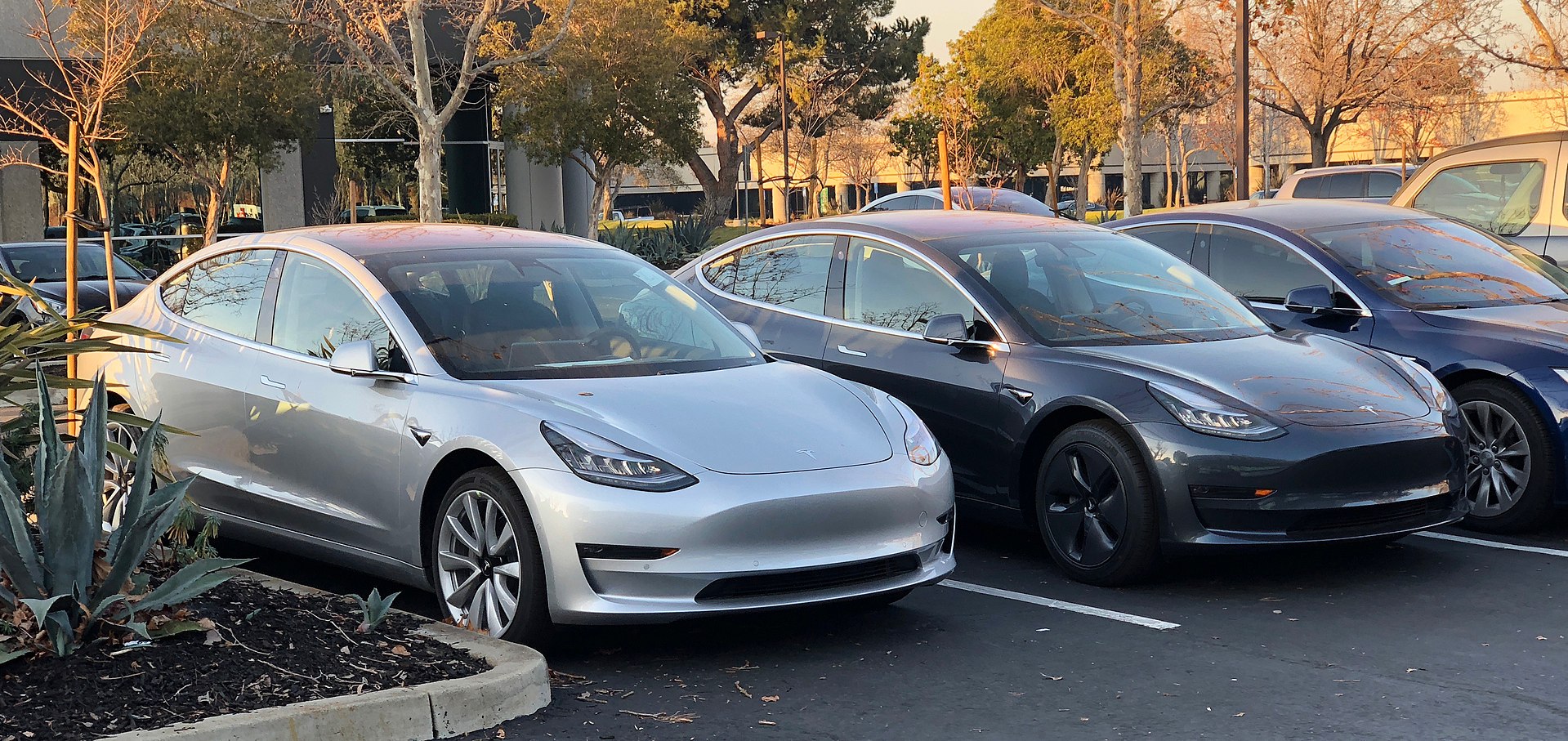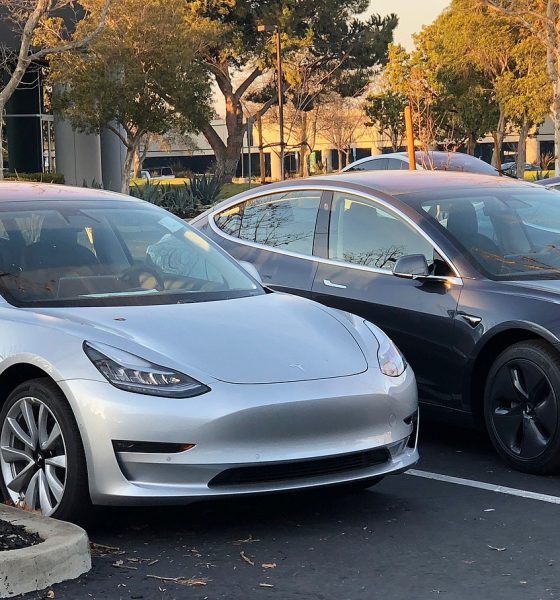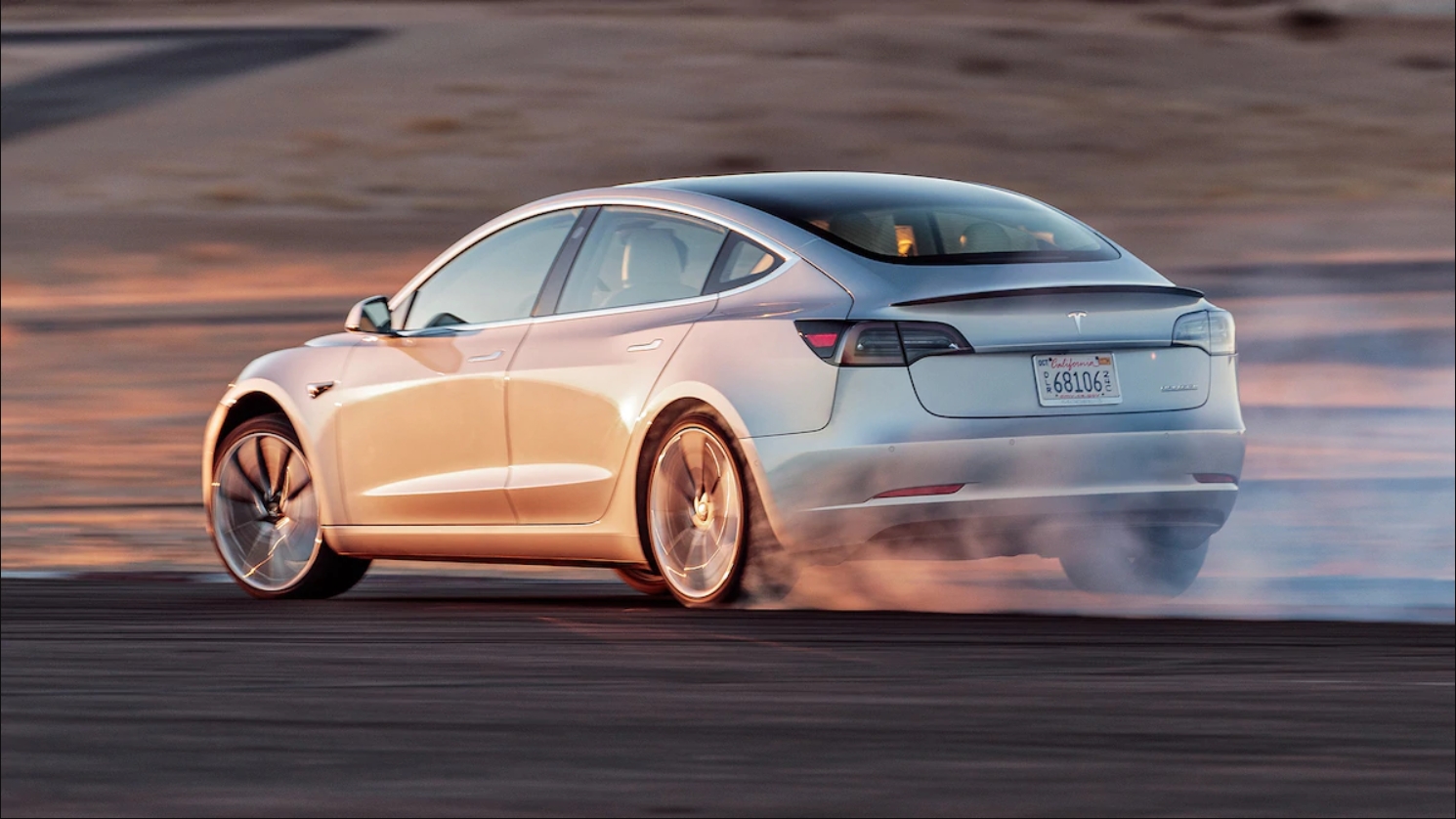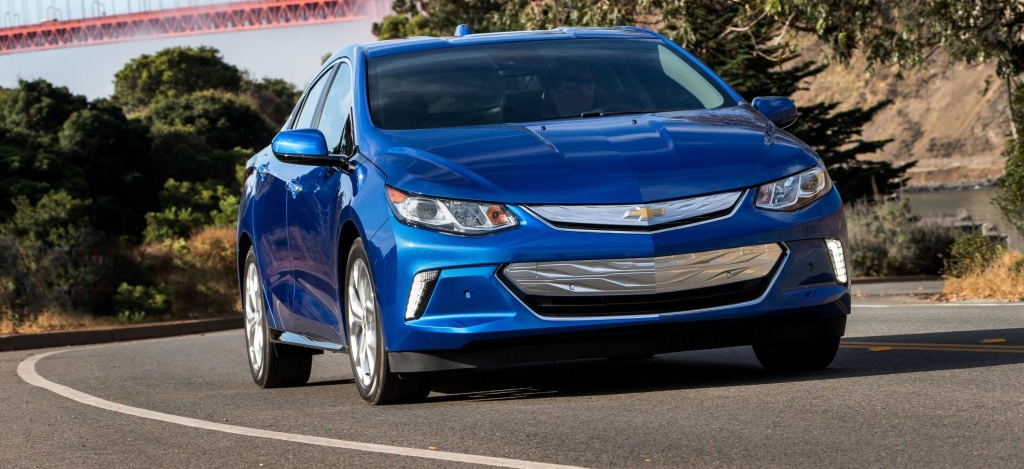

News
Tesla’s Model 3 and the death of plug-in hybrids: ‘Full electric is a much more elegant solution’
Tesla took a big bet when it decided to launch the Model 3. Being a vehicle designed for the mass market, the sheer scale of the sedan’s production was something that Tesla has not dealt with before. It took more time than expected and a trip through “production hell,” but the Model 3 has now been ramped, with Elon Musk noting that producing 5,000 of the vehicles per week is currently no big deal for Tesla.
The market’s reception to the Model 3 has been encouraging. The vehicle has been performing well in the United States, ranking among America’s best-selling passenger cars. In September alone, the Model 3 became the 4th best-selling car in the US based on sales volume. Based on revenue, the Model 3 was even more impressive, ranking first among passenger cars sold in the country. Tesla does not seem to be planning on pulling back from its Model 3 push either, as the electric carmaker has started rolling out exhibits of the vehicle to Europe and Asia this month.
Amidst the evident success of the Model 3 and Elon Musk’s high-stakes bet on the electric sedan, another class of vehicles has begun to show notable signs of a decline — the plug-in hybrids. Plug-in hybrid electric vehicles (PHEV) are equipped with both an electric motor and an internal combustion engine. Popular cars in this class include the Chevy Volt, with its all-electric range of up to 53 miles, and a total range of 420 miles with a full battery and a full tank of gas.

PHEVs have mostly served as the “gateway” vehicles for customers looking to make the jump to electric transportation. Being equipped with a gasoline engine, owners need not worry about any of the initial drawbacks of pure EVs, such as limited range. Plug-in Hybrid and Electric Vehicle Research Center director Gil Tal noted to Bloomberg that in a way, PHEVs are like the “training wheels” of the electric car movement. That said, Tal noted that as practical, capable EVs like the Model 3 emerge, consumers might simply skip PHEVs and adopt all-electric cars instead.
“A full electric (car) is a much more elegant solution. It’s very simple to build and very low maintenance. It’s just a much more simple story. Plug-in hybrids are just the training wheels in the industry’s preparation for electric cars,” Tal said.
The death of plug-in hybrid electric vehicles became more real recently, with GM announcing that it was closing several of its plants across the United States and Canada. Among these plants was GM’s oldest factory at Detroit-Hamtramck, which produces the Volt. In a later statement, GM confirmed that it would be discontinuing the production of the Volt, with the company focusing on developing all-electric cars like the Bolt EV instead.

GM has announced that it is discontinuing the production of the Chevy Volt. [Credit: Chevrolet]
In a way, the apparent death of the PHEV seemed to have been predicted by Elon Musk eight years ago. In a statement to the media during the opening ceremony of the Fremont factory, Musk likened PHEVs to amphibians during the process of evolution. And just like amphibians, Musk noted that the number of PHEVs would likely decrease as the market moves into the full-electric era.
“(PHEVs are) similar to an amphibian. In the transition from the oceans to land, initially, there were a lot of amphibians. Now there’s not that many amphibians. So the only reason you’d ever need that gasoline engine is if the battery pack does not have enough range, if the recharge times are really slow, and all those things will get solved. So there’s a medium-term role for a plug-in hybrid, but in our view, not a long-term role. I think there’s a role for plug-in hybrids today and there’s a role for electrics, but I think long-term, it all goes electric.”
The seemingly impending death of the plug-in hybrid is not just the result of electric cars like Tesla’s Model S, 3, and X. Earlier this year, a Forbes report earlier this year noted that the efforts (or lack thereof) of manufacturers such as GM are partly to blame for the decline of PHEVs. Inasmuch as the Volt was warmly received by owners and well-reviewed by critics, for example, the vehicle remained a rare sight among GM’s dealerships across the United States. GM’s TV advertising campaigns have not featured the Volt, or its all-electric sibling, the Bolt EV, either.
That said, GM appears to be taking its EV initiative seriously this time around. Earlier this month, for one, VP of global strategy Mike Ableson boldly declared during a press conference that GM is looking to “lead the industry in EVs sometime in the next decade or so.” The next years will determine if these words will be true.

Investor's Corner
Tesla price target boost from its biggest bear is 95% below its current level

Tesla stock (NASDAQ: TSLA) just got a price target boost from its biggest bear, Gordon Johnson of GLJ Research, who raised his expected trading level to one that is 95 percent lower than its current trading level.
Johnson pushed his Tesla price target from $19.05 to $25.28 on Wednesday, while maintaining the ‘Sell’ rating that has been present on the stock for a long time. GLJ has largely been recognized as the biggest skeptic of Elon Musk’s company, being particularly critical of the automotive side of things.
Tesla has routinely been called out by Johnson for negative delivery growth, what he calls “weakening demand,” and price cuts that have occurred in past years, all pointing to them as desperate measures to sell its cars.
Johnson has also said that Tesla is extremely overvalued and is too reliant on regulatory credits for profitability. Other analysts on the bullish side recognize Tesla as a company that is bigger than just its automotive side.
Many believe it is a leader in autonomous driving, like Dan Ives of Wedbush, who believes Tesla will have a widely successful 2026, especially if it can come through on its targets and schedules for Robotaxi and Cybercab.
Justifying the price target this week, Johnson said that the revised valuation is based on “reality rather than narrative.” Tesla has been noted by other analysts and financial experts as a stock that trades on narrative, something Johnson obviously disagrees with.
Dan Nathan, a notorious skeptic of the stock, turned bullish late last year, recognizing the company’s shares trade on “technicals and sentiment.” He said, “From a trading perspective, it looks very interesting.”
Tesla bear turns bullish for two reasons as stock continues boost
Johnson has remained very consistent with this sentiment regarding Tesla and his beliefs regarding its true valuation, and has never shied away from putting his true thoughts out there.
Tesla shares closed at $431.40 today, about 95 percent above where Johnson’s new price target lies.
News
I subscribed to Tesla Full Self-Driving after four free months: here’s why
It has been incredibly valuable to me, and that is what my main factor was in considering whether to subscribe or not. It has made driving much less stressful and much more enjoyable.

I have been lucky enough to experience Tesla Full Self-Driving for the entire duration of my ownership experience for free — for four months, I have not had to pay for what I feel is the best semi-autonomous driving suite on the market.
Today, my free trial finally ran out, and I had two choices: I could go without it for a period until I felt like I absolutely needed it, or I could subscribe to it, pay $99 per month, and continue to experience the future of passenger transportation.
I chose the latter, here’s why.
Tesla Full Self-Driving Takes the Stress Out of Driving
There are a handful of driving situations that I don’t really enjoy, and I think we all have certain situations that we would just rather not encounter. This is not to say that I won’t ever experience them as someone who has driven a car for 15 years (it feels weird saying that).
I don’t love to drive in cities; I really don’t like driving on I-695 on my way to Baltimore, and I truly hate parallel parking. All three things I can do and have done, all three within the past few weeks, too.
It takes all the stress out of city driving pic.twitter.com/q0SPPrH4HU
— TESLARATI (@Teslarati) December 4, 2025
However, if I can avoid them, I will, and Tesla Full Self-Driving does that for me.
Tesla Full Self-Driving Eliminates the Monotony
I drive to my alma mater, Penn State University, frequently in the Winter as I am a season ticket holder to Wrestling and have been for 16 years now.
The drive to State College is over two hours and over 100 miles in total, and the vast majority of it is boring as I travel on Rt 322, which is straight, and there is a lot of nature to look at on the way.
I am willing to let the car drive me on that ride, especially considering it is usually very low traffic, and the vast majority of it is spent on the highway.
The drive, along with several others, is simply a boring ride, where I’d much rather be looking out the windshield and windows at the mountains. I still pay attention, but having the car perform the turns and speed control makes the drive more enjoyable.
Tesla Full Self-Driving Makes Navigating Easier
Other than the local routes that I routinely travel and know like the back of my hand, I’ve really enjoyed Full Self-Driving’s ability to get me to places — specifically new ones — without me having to constantly check back at the Navigation.
Admittedly, I’ve had some qualms with the Nav, especially with some routing and the lack of ability to choose a specific route after starting a drive. For example, it takes a very interesting route to my local Supercharger, one that nobody local to my area would consider.
But there are many times I will go to a new palce and I’m not exactly sure where to go or how to get there. The Navigation, of course, helps with that. However, it is really a luxury to have my car do it for me.
To Conclude
There was no doubt in my mind that when my Full Self-Driving trial was up, I’d be subscribing. It was really a no-brainer. I am more than aware that Full Self-Driving is far from perfect, but it is, without any doubt, the best thing about my Tesla, to me.
It has been incredibly valuable to me, and that is what my main factor was in considering whether to subscribe or not. It has made driving much less stressful and much more enjoyable.
🚨 How I’ve gotten Tesla Full Self-Driving for free…until now
Watch me subscribe to Tesla FSD! https://t.co/bjK7EEOptR pic.twitter.com/cs5CmN5PdJ
— TESLARATI (@Teslarati) January 7, 2026
News
Tesla Diner becomes latest target of gloom and doom narrative

The Tesla Diner has been subject to many points of criticism since its launch in mid-2025, and skeptics and disbelievers claim the company’s latest novel concept is on its way down, but there’s a lot of evidence to state that is not the case.
The piece cites anecdotal evidence like empty parking lots, more staff than customers during a December visit, removed novelty items, like Optimus robot popcorn service and certain menu items, the departure of celebrity chef Eric Greenspan in November 2025, slow service, high prices, and a shift in recent Google/Yelp reviews toward disappointment.
The piece frames this as part of broader Tesla struggles, including sales figures and Elon Musk’s polarizing image, calling it a failed branding exercise rather than a sustainable restaurant.
This narrative is overstated and sensationalized, and is a good representation of coverage on Tesla by today’s media.
Novelty Fade is Normal, Not Failure
Any hyped launch, especially a unique Tesla-branded destination blending dining, Supercharging, and a drive-in theater, naturally sees initial crowds taper off after the “Instagram effect” wears down.
Tesla makes major change at Supercharger Diner amid epic demand
This is common for experiential spots in Los Angeles, especially pop-up attractions or celebrity-backed venues. The article admits early success with massive lines and social media buzz, but treats the return to normal operations as “dying down.”
In reality, this stabilization is a healthy sign of transitioning from hype-driven traffic to steady patronage.
Actual Performance Metrics Contradict “Ghost Town” Claims
- In Q4 2025, the Diner generated over $1 million in revenue, exceeding the average McDonald’s location
- It sold over 30,000 burgers and 83,000 fries in that quarter alone. These figures indicate a strong ongoing business, especially for a single-location prototype focused on enhancing Supercharger experiences rather than competing as a mass-market chain
It’s not a ghost town lol. The @Tesla Diner still had over 30,000 burger orders and 83,000 fries orders in Q4. The diner generated over $1M in revenue in Q4, a $4M annual run rate, which is more than the average McDonald’s…. pic.twitter.com/XvAGLUqxej
— Sawyer Merritt (@SawyerMerritt) January 4, 2026
Conflicting On-the-Ground Reports
While the article, and other similar pieces, describe a half-full parking lot and sparse customers during specific off-peak visits, other recent accounts push back:
- A January 2026 X post noted 50 of 80 Supercharger stalls were busy at 11 a.m., calling it “the busiest diner in Hollywood by close to an order of magnitude
TESLA DINER 🍔
Frantic!!!
Crazy busy. pic.twitter.com/wMbmr8SFFn
— Rich & Sharon (@HullTeslaModel3) January 4, 2026
- Reddit discussions around the same time describe it as not empty when locals drive by regularly, with some calling the empty narrative “disingenuous anti-Tesla slop.”
When we visited it last week it was packed. We had to wait to enter, get a table and go to the restroom. We were lucky to find a spot to charge.
— Rani G (@ranig) January 4, 2026
Bottom Line
The Tesla Diner, admittedly, is not the nonstop circus it was at launch–that was never sustainable or intended. But, it’s far from “dying” or an “empty pit stop.”
It functions as a successful prototype: boosting Supercharger usage, generating solid revenue, and serving as a branded amenity in the high-traffic EV market of Los Angeles.








